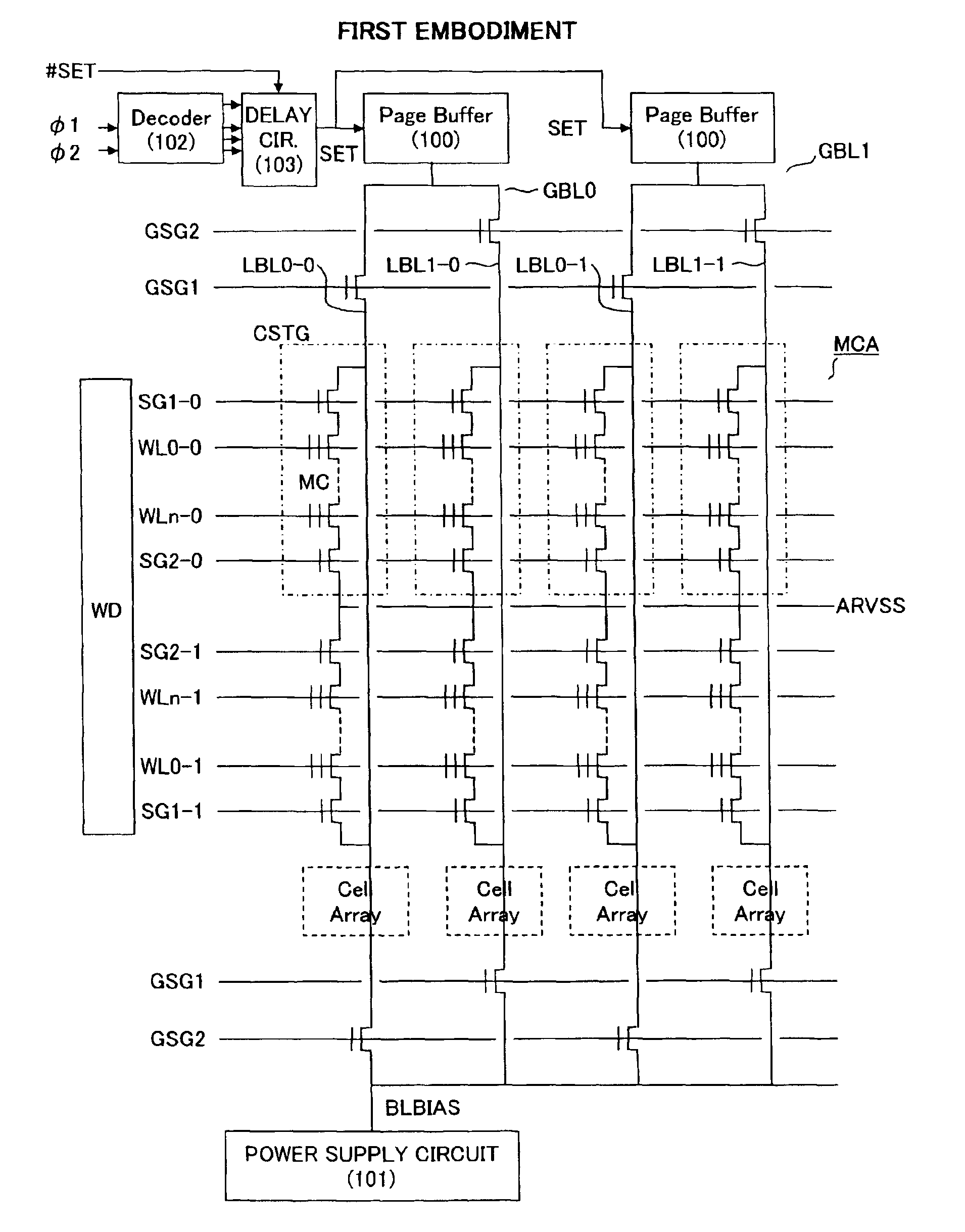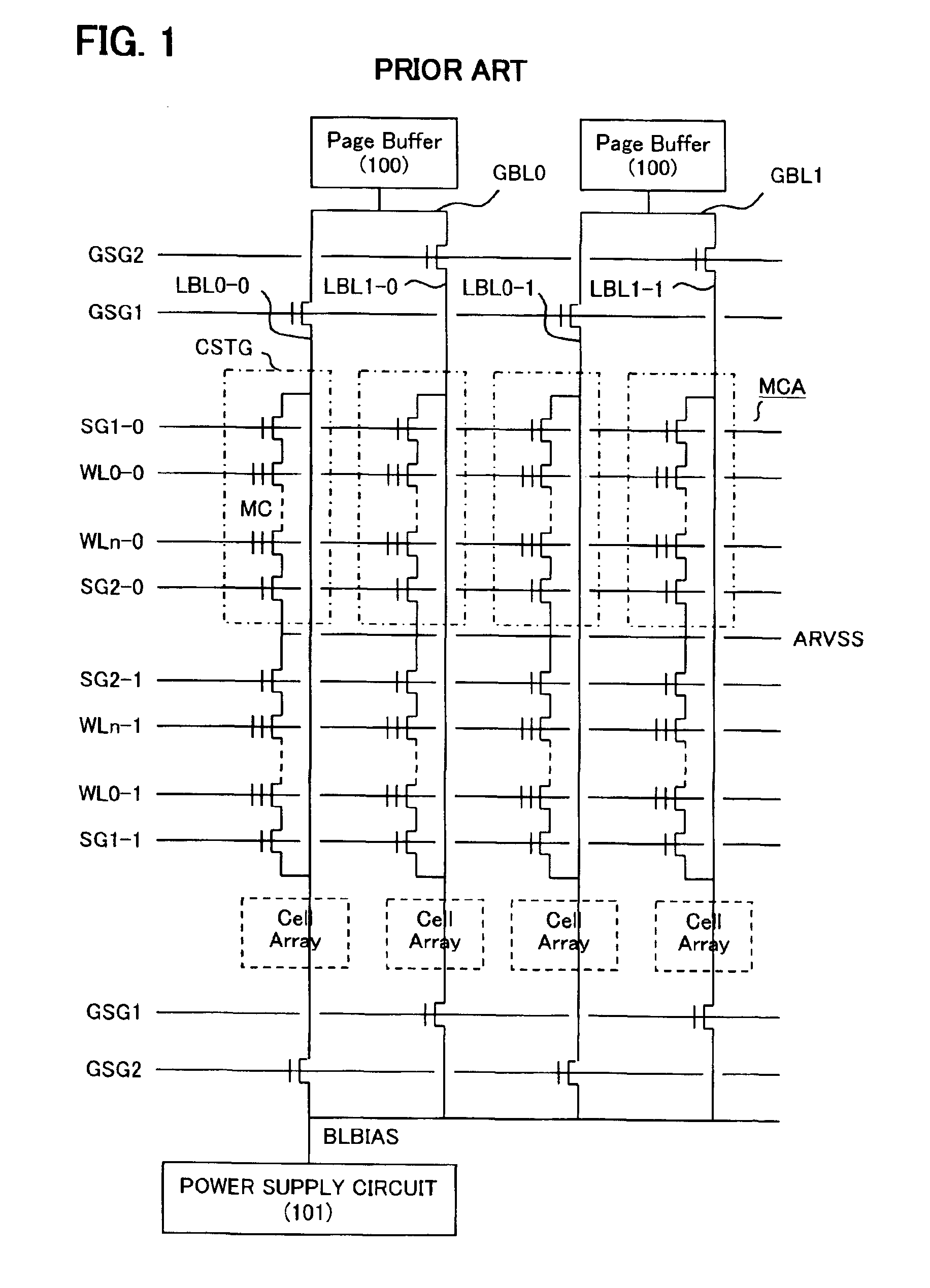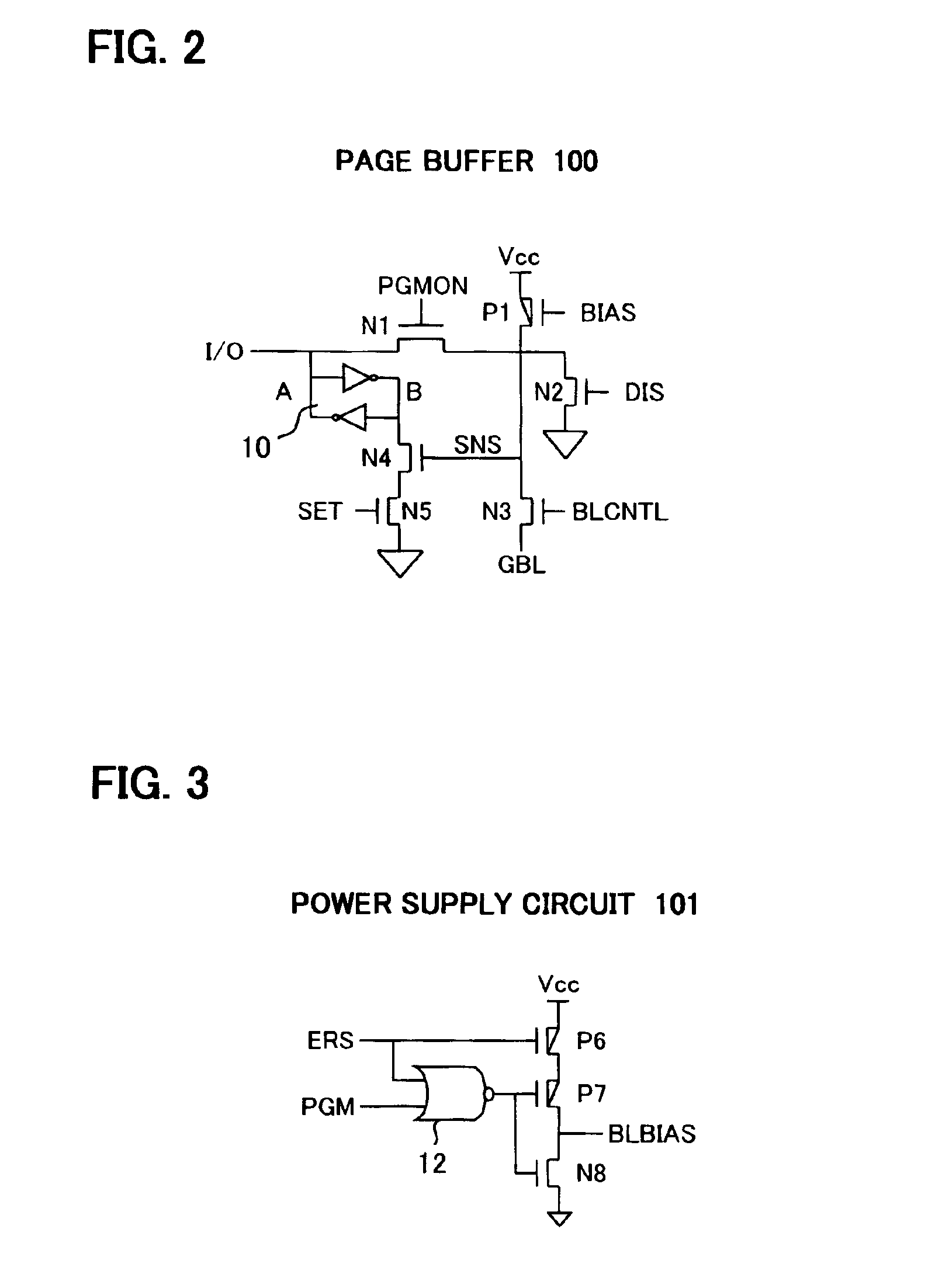AC sensing method memory circuit
a memory circuit and sensing method technology, applied in the direction of memory adressing/allocation/relocation, digital storage, instruments, etc., can solve the problems of increasing the number of cells, increasing the delay, and increasing the capacitance, so as to narrow the threshold voltage distribution of memory cells
- Summary
- Abstract
- Description
- Claims
- Application Information
AI Technical Summary
Benefits of technology
Problems solved by technology
Method used
Image
Examples
second embodiment
[Second Embodiment]
[0066]FIG. 13 is an outline constitutional view of the memory circuit according to the second embodiment. In this embodiment, in addition to an ordinary memory cell array MCA, a reference memory cell array RMCA is provided in the position furthest from the word driver WD. Further, provided in the reference memory cell array are: reference bit lines, and reference memory cells disposed in the positions of intersection between the reference bit lines and the word lines, wherein the sense timing of the page buffers is determined in accordance with the potential produced when the reference bit lines are discharged by cell currents of reference memory cells that belong to the selected word lines.
[0067]FIG. 14 shows a detail circuit diagram of the memory circuit according to the second embodiment. The reference memory cell array RMCA is provided on the opposite side to the word driver of the ordinary memory cell array MCA. The reference memory cell array RMCA of FIG. 14...
PUM
 Login to View More
Login to View More Abstract
Description
Claims
Application Information
 Login to View More
Login to View More - R&D
- Intellectual Property
- Life Sciences
- Materials
- Tech Scout
- Unparalleled Data Quality
- Higher Quality Content
- 60% Fewer Hallucinations
Browse by: Latest US Patents, China's latest patents, Technical Efficacy Thesaurus, Application Domain, Technology Topic, Popular Technical Reports.
© 2025 PatSnap. All rights reserved.Legal|Privacy policy|Modern Slavery Act Transparency Statement|Sitemap|About US| Contact US: help@patsnap.com



